Young People See Cars As Status Symbol Finds Continental Study
- By MT Bureau
- October 30, 2024
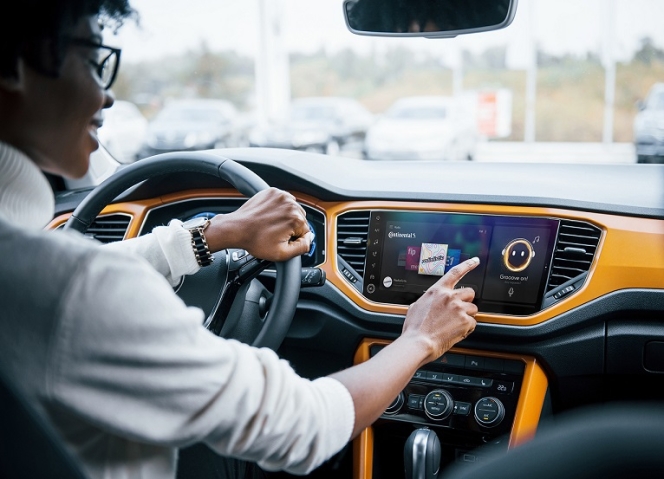
German tier 1 supplier Continental recently commissioned a representative mobility study in August 2024 to understand the perception about young people on mobility needs.
For the Mobility Study 2024, infas was commissioned by Continental in August 2024 to survey a total of around 5,000 people aged 18 and over in Germany, China, France, Japan and the USA about their mobility habits and attitudes to a variety of mobility issues. In each country, the respective sample is representative of the population; for China, it is representative of the urban population. The aim of the Continental Mobility Study, now in its eighth edition since 2011, is to provide an international comparison of people’s attitudes toward current and future developments in mobility and their personal usage habits. The range of topics covered in this year’s study included automated driving, user experience, AI in cars, sustainable mobility concepts, mobility in urban areas, the affordability of mobility and attitudes toward government regulation in the mobility sector.
The key findings found that overall, 84 percent of car owners in Germany, regardless of age, believe that it is important to own a car. For almost 90 percent, having a car is essential for shopping and running other errands. The majority of young people in Germany are particularly enthusiastic about technological advances in cars. They look forward to the benefits self-driving cars will offer in terms of being able to read, play video games or work (51 percent of 25 to 34-year-olds). In addition to autonomous driving, artificial intelligence (AI) in the form of digital voice assistants is very popular with this group. There is a similar level of approval in the four other countries surveyed in the study.
Philipp von Hirschheydt, Executive Board member responsible for the Automotive group sector, Continental, said, “The findings show that the response to new technologies such as automated driving, large displays and AI in cars varies greatly between generations and also between countries. That’s why we aim to provide customised solutions – market-specific, tailor-made and modular.”
The findings of the study also reveal the current status of the trend toward lower-emission mobility worldwide. Particularly striking is that acceptance of fully electric cars remains low.
In Germany, only 3 percent of all car owners have an electric vehicle. However, just over a third of respondents who do not yet own an electric vehicle believe their next car will be fully electric (39 percent, compared with 34 percent in 2022). By contrast, hybrid drives are highly popular across all countries. In Germany (48 percent) and the USA (47 percent), nearly half of respondents who do not own an electric car can imagine their next vehicle being a hybrid with a combustion engine and an electric motor.
In China, that figure rises to almost nine out of 10 respondents (86 percent). This means that hybrid cars could increasingly bridge the gap to e-mobility and give it a renewed boost. With a share of 68 percent, younger people in Germany aged between 25 and 34 are particularly interested in electric cars – also compared with their international peers.
Vehicle as a status symbol
On the one hand, younger people up to the age of 34 in Germany do not feel that attached to cars. For them, more than for older respondents, it is one of many means of transportation available. On the other hand, generation Y and Z drivers born in the 1990s and later have a clear emotional connection to their cars: for more than half of 18 to 34-year-olds (54 percent) in Germany, cars are regarded as a status symbol – twice the share among respondents aged 45 and over. People aged between 18 and 34, particularly those living in large cities, see cars as a prestige item (67 percent). In small towns and rural areas, the approval rate is around 49 percent. This view of the car is accompanied by growing expectations. Of the 25 to 34-year-olds surveyed, for example, 51 percent believe that cars of the future should not only be a safe means of transportation, but also a place to relax and work.
Tech attracts young people
The study also found that younger people in Germany also had a positive attitude toward highly automated and autonomous driving, with around two-thirds (65 percent) of 18 to 34-year-olds seeing this as a useful development. Among older respondents aged 55 and over, 39 percent share this view. Around two-thirds of younger people up to the age of 34 also believe that state-of-the-art technologies should be mandatory in newly registered cars in order to make traffic even safer – a viewpoint that signals approval of the EU directive requiring certain advanced driver assistance systems in new cars, which has been in force since July 2024.

Another future technology that is particularly popular with younger people is AI assistants in cars. Almost three-quarters of respondents (74 percent) between the ages of 18 and 34 would welcome an AI voice as a service that, like a virtual travel companion, provides useful information about sights and restaurants along the route, finds the nearest gas or charging station, searches for free parking spaces or even compiles personal messages.
“Younger people in particular have changing expectations of cars. These are closely linked to pioneering technologies such as automated driving, which deliver new user experiences. At Continental, we’re already equipping cars with AI. Together with our partner Google Cloud, we have developed a virtual companion for drivers. We are particularly proud to be one of the first automotive suppliers worldwide to integrate Google Cloud applications directly into our vehicle computers,” added Hirschheydt.
Autonomous & AI
The comparison between countries reveals a widespread openness to highly automated and autonomous driving in Asia across all age groups. In China, nine out of 10 respondents (90 percent) view the relevant technologies as a useful development, while in Japan, almost three-quarters (72 percent) share this sentiment. In France (60 percent) and the USA (56 percent), more than half of those surveyed have a positive attitude. In Germany, around one in two respondents (49 percent) feel the same. An AI-powered virtual travel companion is particularly popular in China, where nine out of 10 respondents (91 percent) say they would like to have such a service. In the USA (66 percent) and Japan (63 percent), around two-thirds express this wish, while in France (58 percent) and Germany (57 percent) more than half would be happy to have the technology.
There is broad agreement across all countries on the ideal size of a car display for infotainment content. Most people prefer larger displays, with 90 percent of respondents in China favouring this option.
In Germany (81 percent), France (79 percent) and the USA (80 percent), eight out of 10 respondents would like their navigation, vehicle data and music to be shown on large screens.
In Japan, the figure is more than two-thirds (69 percent). However, preferences differ significantly when it comes to technological details. While the majority of respondents in Japan (79 percent) and more than half in Germany (57 percent) prefer a simpler display on car screens, a slight majority in the USA (58 percent) favour more colours. By contrast, many features are popular in China (69 percent). In Japan (70 percent), the majority prefer a more straightforward digital design, while in Germany, around half feel the same way (55 percent).
There are also differences between countries when it comes to the question of whether a display should be controlled by voice or manually: voice control is particularly popular in Japan (67 percent), more than half are in favour of it in China (59 percent), while the number is significantly lower in Germany (43 percent). In the USA, just over half (55 percent) also prefer to operate a display manually.
Hybrid
The study shows that hybrid drivers in Germany have an above-average interest in all-electric mobility – a strong indication that hybrid cars can play a key role as a bridging technology for the transition to fully electric drives.
For example, 43 percent of respondents who currently use a vehicle with a combined combustion engine and electric motor say that their next car will definitely be an all-electric vehicle. Those who drive a gasoline or diesel vehicle are significantly less open to such a switch (12 and 19 percent respectively). In addition, a clear majority (58 percent) of hybrid drivers would be willing to buy an electric car without a government subsidy.
The data suggests that hybrid vehicles are boosting people’s confidence in e-mobility and may help reduce any reservations about fully electric vehicles. One group with significant future potential for this development is the 48 percent of respondents who do not drive an electric or hybrid car and for whom an all-electric car is not currently an option, but who are considering a hybrid as their next car.
Varying degree in e-cars
The shift to electric mobility is under pressure in Germany, where sales of all-electric cars are faltering. According to the latest figures of the Continental study, electric cars represent a significant share (10 percent) of the overall passenger-car fleet in China, while only 3 percent of respondents in Germany drive an all-electric car and 91 percent a car with a combustion engine (China: 80 percent). There is potential for higher sales of electric cars in Germany, particularly among those aged 18 to 34. In this age group, around two-thirds (64 percent) of respondents believe it is certain or likely that their next car will be fully electric – a trend that gradually diminishes in older generations.

A look at age-dependent attitudes toward electric mobility reveals that, like many other technological developments, e-mobility is more appealing to younger drivers than older ones. They are more willing to forgo subsidies: 50 percent of 25 to 34-year-olds would consider buying an electric car without government assistance. However, the willingness to fully finance an electric vehicle decreases significantly among those aged 45 and older.
EVs and subsidy
The study found that two-thirds of respondents in Germany link the purchase of an electric car to a government subsidy is an expression of their concerns about being unable to finance an electric car on their own. In Germany, 71 percent of respondents worry that mobility will no longer be affordable due to rising energy prices. In the 2022 Mobility Study, 73 percent of people in Germany expressed their concerns about the affordability of mobility.
What’s more, 65 percent of respondents fear that they will not be able to afford an electric car in the near future and 56 percent are worried that driving could soon become too expensive for them. As a result, a clear majority (80 percent) expect policymakers to create the framework conditions to ensure that driving remains affordable. At the same time, they believe driving should be made more sustainable in the most cost-neutral way possible. Almost three-quarters (73 percent) of respondents think that the cost of environmentally friendly cars needs to fall. Regulatory interventions such as a speed limit of 130 kmph on highways are met with acceptance (62 percent), provided they do not lead to price increases. Younger respondents are less price-sensitive. They are much more prepared to pay a premium for environmentally friendly cars, especially if they are completely carbon-neutral in production and operation (40 percent of 18 to 24-year-olds compared with 13 percent of 45 to 54-year-olds).
Sustainable tyres
Sustainability is an important concern for people with cars is also demonstrated by their attitude to tyres. According to the study, almost eight out of 10 drivers in Germany (84 percent) who also value tyre recycling consider it important that their tyres contain an increasing share of environmentally friendly materials. When purchasing tyres, younger people (61 percent of 25 to 34-year-olds) are more concerned than older people about what happens to the tyres at the end of their service life.
Furthermore, 44 percent of car owners in Germany would be willing to pay a premium for tyres made from a higher share of renewable and sustainable materials. Here again, this willingness is most pronounced among 25 to 34-year-olds (65 percent).
Citroen India Delivers 51 C3 CNG Vehicles To Luthra Group
- By MT Bureau
- December 24, 2025
Citroen India, in partnership with its dealership La Maison Nanavati, has completed the handover of 51 Citroen C3 CNG vehicles to the Luthra Group. The ceremony took place at the Luthra Group’s headquarters in Surat.
The delivery is part of Citroen's strategy to expand its presence in tier-II and tier-III markets by providing mobility solutions to businesses and individuals.
The Citroen C3 CNG is designed for high-usage environments and daily commutes. The model includes several features tailored for the Indian market, integration of a factory-fitted CNG kit to manage running costs. A suspension system tuned specifically for local road conditions. Provisions for cabin space and air-conditioning systems designed for high-ambient temperatures.
The handover to Luthra Group represents the brand's focus on cost-efficient transportation. By targeting the regional business sector, Citroen India aims to strengthen its footprint in Gujarat and the broader Indian mobility market.
The C3 CNG is positioned as a solution for users requiring reliability and low operating expenses without compromising on ride comfort.
Maruti Suzuki India Partners Uttar Pradesh Gramin Bank For Retail Financing
- By MT Bureau
- December 24, 2025
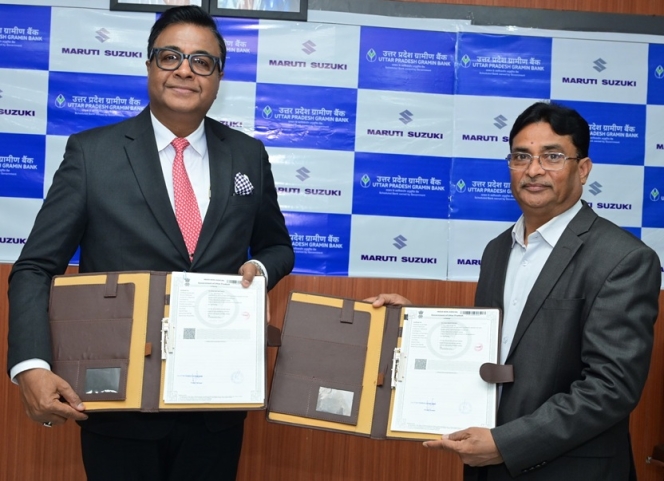
Maruti Suzuki India has signed a Memorandum of Understanding (MoU) with Uttar Pradesh Gramin Bank, a regional rural bank, for vehicle retail financing partnership on new cars, pre-owned vehicles and commercial vehicles.
This collaboration marks the 50th retail finance partner for Maruti Suzuki India. The partnership is intended to use the bank’s network to provide credit options to a range of customer profiles, particularly in rural and semi-urban regions.
The partnership aims to increase the accessibility of Maruti Suzuki products through, tailored finance schemes designed for rural and regional customers.
Partho Banerjee, Senior Executive Officer, Marketing & Sales, Maruti Suzuki India, said, “Our partnership with Uttar Pradesh Gramin Bank marks a significant milestone as we onboard our 50th retail finance partner. This reinforces our commitment to making car ownership simpler and more affordable for customers across India. By expanding our reach through this strategic alliance, we aim to empower buyers with competitive, customer-friendly financing solutions that enhance the overall purchase experience. We remain focused on delivering seamless, tailored finance options, and this collaboration strengthens our vision of providing the Joy of Mobility to aspiring Indian consumers.”
Yadav S. Thakur, Chairman, Uttar Pradesh Gramin Bank, said, “At Uttar Pradesh Gramin Bank, empowering customer aspirations is at the heart of everything we do. Our partnership with Maruti Suzuki, a leader in the automotive industry, is a strategic step towards enhancing our service offerings and delivering greater value to our customers. This collaboration aligns with our 'Customer-First' mission, enabling us to provide accessible and affordable vehicle financing solutions. We look forward to helping more individuals and families across the country realise their dream of owning a Maruti Suzuki vehicle.”
Kia India Commences Production Of New Seltos In Anantapur
- By MT Bureau
- December 23, 2025

Kia India has started production of the latest generation Seltos at its manufacturing facility in Anantapur. The company has confirmed that prices for the mid-SUV will be announced on 2 January 2026.
The Anantapur plant, established in 2019, serves as a hub for both the Indian domestic market and international exports. The facility uses automation and a local workforce to manufacture the Seltos, which was the first model produced by the company in India.
The new model is built on Kia’s K3 platform, which has been engineered to increase structural rigidity and improve suspension damping. The vehicle has grown in size compared to its predecessor to increase cabin space and stability. It has 4,460 mm of length, 1,830 mm of width and a wheelbase of 2,690 mm.
The exterior design follows the ‘Opposites United’ philosophy, featuring a ‘Digital Tiger Face,’ LED projection headlamps, and alloy wheels with neon brake callipers.
The vehicle integrates several digital interfaces and driver assistance systems. It features an upgraded Kia Connect 2.0 suite with over-the-air (OTA) software updates and a proximity unlock function.
In terms of safety, it gets 24 features as standard, while ADAS Level 2 offers 21 autonomous features to assist the driver. The Kia Seltos SUV comes with three engine options – 1.5-litre Petrol producing 115 PS of power and 144 Nm of torque, 1.5 T-GDI Petrol producing 160 PS of power and 253 Nm of torque and a 1.5-litre diesel engine producing 116 PS of power and 250 Nm of torque.
Transmission choices include a 6-speed manual (6MT), intelligent manual (6iMT), IVT, 7-speed dual-clutch (7DCT) and a 6-speed automatic (6AT). The model will be sold in four trims – HTE, HTK, HTX and GTX – with additional option variants and an X-Line styling pack.
Gwanggu Lee, Managing Director & CEO, Kia India, said, “The roll-out of the All-New Kia Seltos marks a proud milestone for Kia India. Seltos has long set benchmarks in the mid-SUV segment, and this new generation represents a bigger, bolder, and more progressive evolution shaped by insights from Indian customers. With production now underway at our Anantapur facility, our teams are fully geared to ensure customers can take delivery of their all-new Seltos without long waiting periods. We are confident the all-new Seltos will once again redefine expectations in the segment and strengthen Kia’s leadership in India."
“The new Seltos looks fantastic. The Anantapur team, together with our supplier partners, have done an outstanding job in delivering our customers a great looking, significantly bigger, technologically progressive and safe vehicle with impressive functionality and connectivity,” he said.
- Citroen India
- Jeep
- Stellantis
- Citroen 2.0
- Shailesh Hazela
- Kumar Priyesh
- Sree Venkata Teja Kethineni
- VTK Automobiles
Citroen India Opens 126th Outlet In Chennai Under Citroen 2.0 Strategy
- By MT Bureau
- December 23, 2025
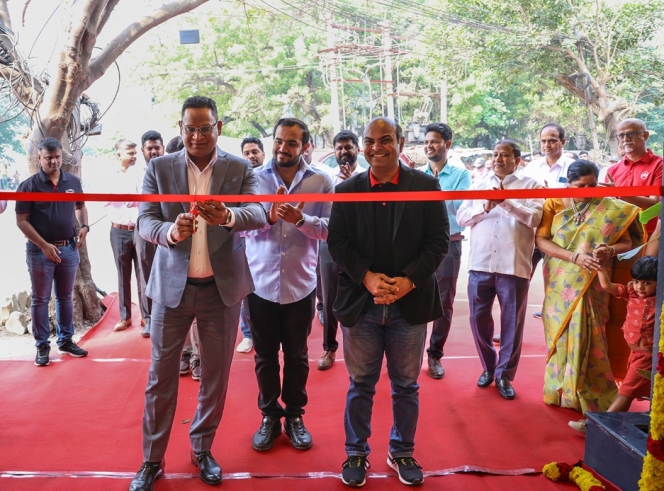
Stellantis-owned French automotive brand Citroen India has inaugurated its 126th point of sales and service (POS&S) facility in Chennai, continuing the expansion of its network under the ‘Citroen 2.0 – Shift Into The New’ strategy.
The new 3S (Sales, Service and Spares) facility is located at Chitlapakkam, near Chrompet. It is an extension of the partnership with VTK Automobiles, which now operates five Citroen touchpoints in the city. The outlet functions as a ‘Stellantis Brand House,’ allowing customers to access both Citroen and Jeep brands within a single space.
Since the announcement of the Citroen 2.0 strategy, the brand has increased its network by 48.6 percent. Over the last six months, the company added 43 points of sale through its network expansion programmes. Citroen expects to reach a total of 135 outlets by the end of the year, with further operations planned for the north, west, and east of India.
The strategy focuses on several pillars – deepening the domestic supply chain for India-centric products. Expanding the dealer footprint into Tier 2 and Tier 3 locations. Using digital tools and unified spaces for sales and aftersales services.
Shailesh Hazela, CEO and Managing Director, Stellantis India, said, “The expansion of Stellantis network further with VTK dealership in Chennai marks another important step in Citroen and Jeep India’s network growth strategy. Chennai is a key market for us, and this upgraded facility will enable us to serve our customers better with a seamless sales and ownership experience. Aligned with our Citroen 2.0 strategy, we remain committed to strengthening our dealer partnerships and building a robust, customer-centric network across the country.”
Kumar Priyesh, Director Automotive Brands, Stellantis India, said, “We have grown our network by almost 48.6 percent since we announced the Citroen 2.0 strategy and have been able to expand our operations in different parts of country: adding tier 2/3 locations while further strengthening in Metro/ Tier 1 cities. Through project Visitar, Network Expansion Program and expansion in new geographies we added over 43 POS in the last 6 months and are already in advanced stages to start additional operations in North, West and Eastern parts of the country and expected to close the year with 135 POS for Citroen.”
Sree Venkata Teja Kethineni, Dealer Principal, VTK Automobiles, said, “We’re happy to partner to this pivotal shift in automotive retail, proudly representing Jeep and Citroen. Our dual-brand strategy empowers us to deliver a truly elevated and distinctive experience – whether customers seek rugged performance or refined sophistication. With passion, professionalism and personalised care at the core, our team is committed to exceeding expectations and upholding the global standards these iconic brands represent.”
The facility includes a service centre equipped with diagnostics and digital tools. Staff members are trained across both Jeep and Citroen product lines to provide technical support and product information.


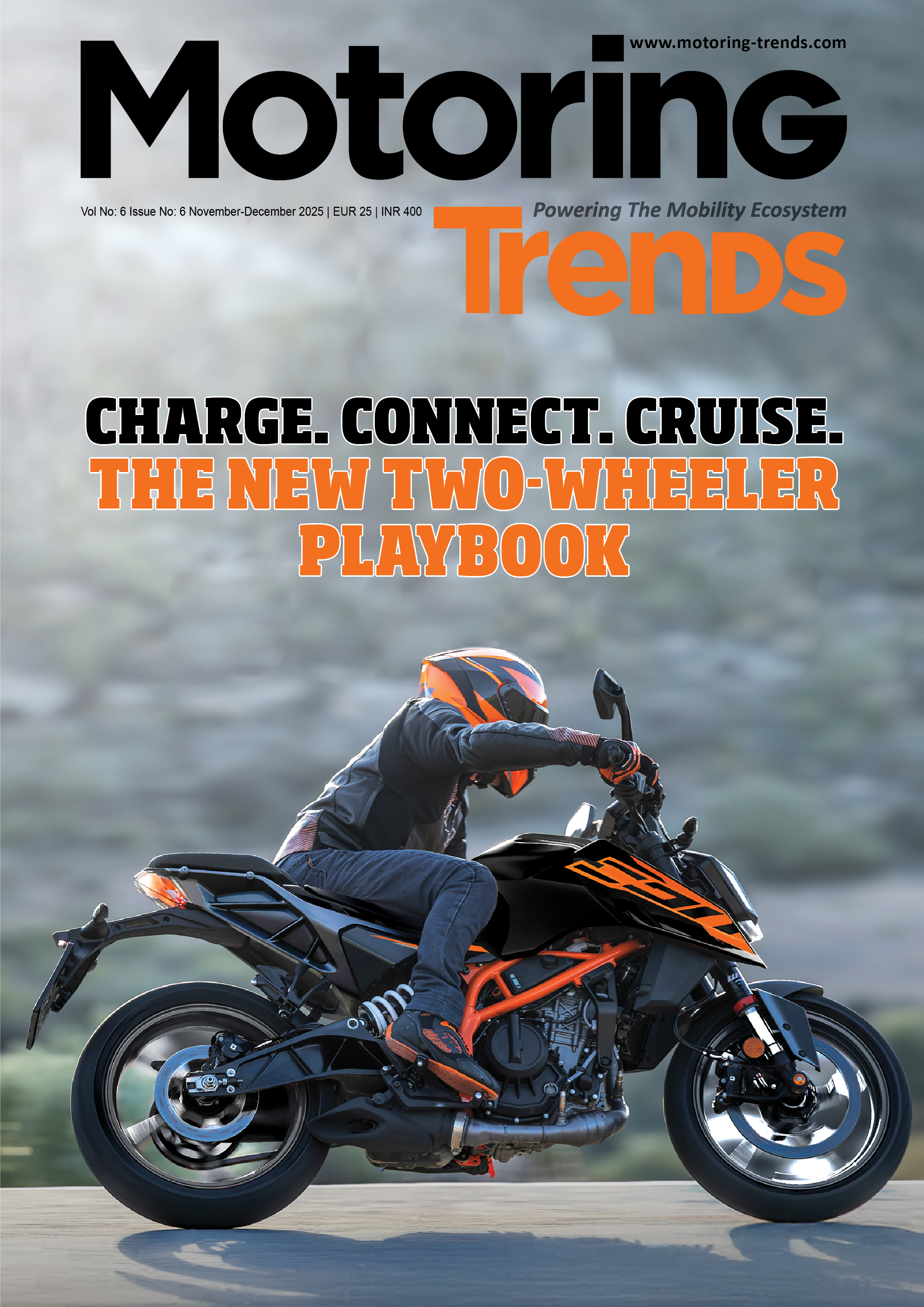
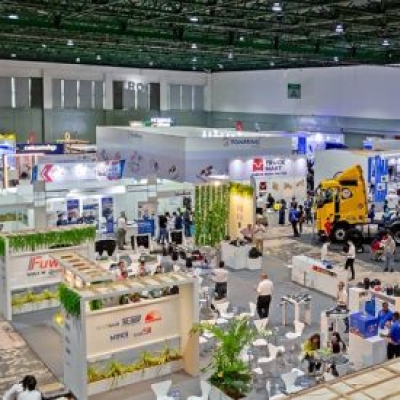


Comments (0)
ADD COMMENT